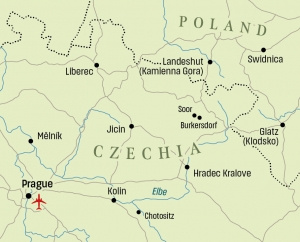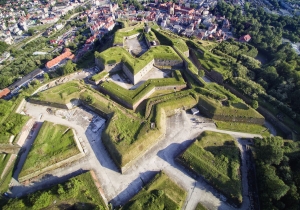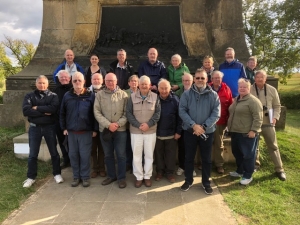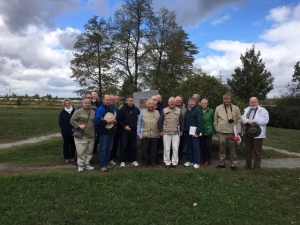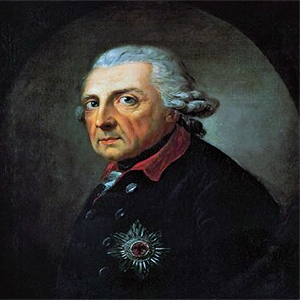
Frederick the Great in Bohemia
Bohemian Battles and Silesian Sieges
To be confirmed
Frederick the Great in Bohemia
Bohemian Battles and Silesian Sieges
Tour Introduction
During this tour of Poland and Czech Republic we analyse aspects of the War of Austrian Succession and the Seven Years War in Bohemia and Southern Silesia in which Frederick enjoyed the early successes that encouraged his invasion of Bohemia in 1757, one that came mightily close to occupying Prague. We will see how the Austrian Empire learnt to defend itself against the Prussian military machine to ultimately force Frederick’s army back into Silesia; evaluate numerous examples Frederick’s influential military thinking and tactical nous; and discuss his defeats which, whether due to sheer numbers or rare strategic misjudgements, cost him heavy losses in men, key fortresses and, ultimately, success. Our expert historian, Major General John Drewienkiewicz, extends his study of the Prussian Army of the 1860's right back to its roots to the climactic battles which inspired the later generals. And as a former engineer, he will explain why Frederick had greater success in the field than he did with fortresses. The tour is based out of the Polish town of Swidnica (Schweidnitz) and Hradec Kralove (perhaps better known to history as Koniggratz), travelling through stunning rolling countryside, experience wonderful Polish and Czech hospitality and visits some less well-known, little-disturbed battlefields and fortresses to provide an almost perfect platform from which to demonstrate Frederick the Great’s tactical and strategical genius.
Background
Frederick II was known as ‘the Great’ not only to history but during his own lifetime. He was a man of honour yet a duplicitous monarch; a cultured, sensitive individual and yet a ruthless disciplinarian; charming and congenial yet crude and cruel; one of the greatest generals who ever lived and yet he lost more battles than he won. Imbued with a thorough appreciation of the principles or war and a clear understanding of military technology, he capitalised on the slow military systems and methods of war of his time, not through innovation, but though ceaseless peacetime training to increase the mobility, speed and professionalism of his armies. He ensured that every man and officer could perform to the highest standard so that when it came to war, he could focus on leading his armies competently, managing his country’s war economy effectively and exercising stately duties both at home and on the international stage. As T. N. Dupy pointed out, “it was courage, resourcefulness, industry, persistence, intelligence and complete objectivity, which preserved him and Prussia against almost unbelievable adversity”. Frederick, himself, summarised his efforts before the Seven Years’ War ended saying “I have all the properties of a stage hero, always on the point of perishing. One must hope that the conclusion will come soon, and if the end of the piece be lucky, we will forget the rest”.
“My every bale of hay, sack of money or batch of recruits only arriving by courtesy of the enemy or from his negligence”, Frederick, 10 December 1761.
“A general will be mistaken if he rushes to attack the enemy in hilltop positions …..in a war waged between equal forces you can be more certain of gaining the advantage by the employment of deception and speed”, Frederick, 3 March 1764.
Highlights
- With leading expert Maj-Gen John Drewienkiewicz
- Evaluate the challenges dending and attacking the Silesian/Bohemain passes
- Visit the magnicicent fortress of Glatz
- Walk the site of Frederick's impregnable camp at Bunzelwitz
- Spend a full day on the field of Kolin
What's Included
- Expert historians throughout providing a daily variety of talks, presentations and Q&A
- 3 & 4 Star Hotels
- A three-course dinner party on 6 evenings hosted by your expert historian and tour manager
- Buffet breakfast each morning
- Dedicated Tour Manager
- Entrance fees for sites included in itinerary
- Modern, comfortable, air-conditioned coach
- Tour information booklet
- Return flights from London (optional)
- The company of like-minded travelers
- Two drinks i,e wine or beer at each dinner and a welcome drink on first evening
"This was our first battlefield tour we have been on and it exceeded all of our expectations. John really is an expert in his field"
Itinerary
Day 1. Arrive.
From Prague airport we transfer to our hotel in Swidnica (Schweidnitz) for four nights. Introductory talk.
Day 2. Landeshut (Kamienna Gora).
We examine the Prussian fortifications defending Landeshut and the passes into Silesia from Bohemia and explore the battlefield where the Austrians virtually destroyed the entire Prussian force tasked with the defence (23rd June 1760).
Day 3. Glatz (Klodsko).
We visit the magnificent fortress of Glatz successfully besieged and stormed by the Austrians on 26th July 1760. Time permitting, to the fortress of Silberberg, built after the Seven Year’s War to consolidate Prussian acquisitions.
Day 4. Bunzelwitz and Schweidnitz.
We walk and evaluate the open ground and gentle knolls that were once home to Frederick’s rapidly constructed fortified camp from August to September 1761, perceived to be impregnable by the Austrians and Russians. Little remains of the defences of Schweidnitz, but there are the occasional traces from where we can discuss the city’s capture by the Austrians on 1st October 1761. Dinner is not provided tonight.
Day 5. Burkersdorf.
Following the ‘miracle of the house of Brandenberg’ in July 1762 Frederick returned to Silesia and on 21st July defeated a much larger Austrian force at the battle of Burkersdorf. We spend a full days exploring the battlefield and then continue to Hradec Kralove where we check-in to our hotel in for three nights.
Day 6. Chotositz and Soor.
Today we step back to the Austrian War of Succession starting at Chotositz, 17th May 1742, the only battle initiated by the Austrians during the War of Succession as they tried to retake Prague from an unprepared Frederick who, despite his scattered forces, ended up snatching victory form the jaws of defeat. At Soor on 30th September 1745, Frederick once again proved his and his army’s military superiority comfortably defeating a surprise attack by a vastly superior Austrian army.
Day 7. Kolin.
Returning to the Seven Year’s War and Frederick’s invasion of Bohemia, we spend an enjoyable day walking the largely unspoilt battlefield of Kolin, fought on 18th June 1757, the scene of Frederick’s first defeat of the war. We will walk the Kaiser Strasse, visit Krzeczor with its church and monument, admire the glacis like slope and stroll besides the old Swedish earthworks, both protecting the Austrian positions. From here we gain a commanding view of the Prussian approaches which we will subsequently follow as we wander down county lanes and ramble over the verdant rolling countryside.
Day 8. Prague.
The field on which Frederick won his bloody, yet inconclusive victory over the Austrians on 6th May 1757 being situated in the eastern suburbs of the modern city makes for a difficult interpretation. Yet there are enough sites to make sense of the events prior to our final journey to Prague Airport for return flights.
Recommended Reading List
Photo Gallery
Your Holiday Essentials
To be confirmed
click here to register your interest
Tour Review
Take a look at some independent reviews of this tour by previous participants here

